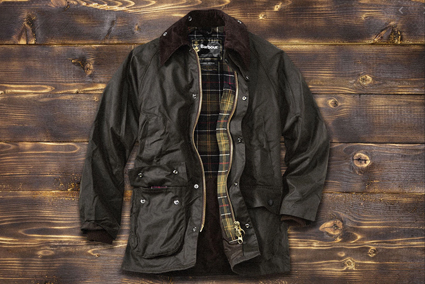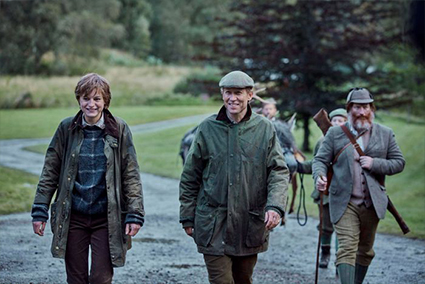2020 has been a sort of forecasting “Armageddon”, with no historical data on which to rely to orient business decisions. Is it time to stop making predictions, then? Not at all. Rather, it’s time to change the way we make them.
Demand Sensing has changed the way forecasting is performed, focusing on short-term analysis to overcome the new challenges imposed by such a change.
Is a world without a past also a world without a future?
If there’s anything to learn from last year, it’s that one needs to be ready to throw everything out of the window when forecasting. 2020 has truly been a forecasting Armageddon, which brought all industry actors back to ground zero, with no certainties to rely on and no historical data to orient business actions.
DOES THIS MEAN THAT WE HAVE TO STOP FORECASTING?
Not really. It means that we have to change the way we do it, most importantly by starting from a different presupposition: in a world dominated by uncertainty, the winning strategy is not trying to predict the unpredictable, but rather to react to it in the best way possible.
The impact of COVID-19 on our reality has certainly been tremendous, but it can also be seen as an opportunity to reinvent old logics that had long
showed weaknesses and were surviving inertially, drawn in merely by the habitual way of doing things.
There are some key concepts to this revision process, such as: smart-working, distance-learning, environmental sustainability and the capitalist model, physical and mediated social interaction, collective intelligence and our challenged resilience.
Particularly interested in this process of critical revision is the domain of demand intelligence, together with all those analytical techniques that are concerned with forecasting.
But that something was changing, or had to change, wasn’t anything new at all. The arrival of COVID-19 has just accelerated an awareness that was already there: we weren’t completely unprepared to deal with a future without a past.
Demand sensing: short-term future
Generally speaking, the process of demand forecasting is based on the analysis of time series, which, in the case of retail, are extracted from sales and shipping data. Nowadays, however, new techniques are changing the way we understand demand forecasting, concentrating less on long periods of time and more on periods of a few weeks, even days.
This forecasting technique is defined as demand sensing and combines large quantities of data from the most varied sources (not only historical sales records) with artificial intelligence (AI) and machine learning techniques. Demand sensing systems mix together virtual collective conversation and information coming from point-of-sale terminals (PoS) in order to offer a real-time depiction of what is happening to the products themselves, either at the physical shop or via online sales channels. Data regarding sales is therefore combined and integrated with all sorts of other data, from weather forecasts to trending hashtags on Instagram, in a continuous juxtaposition of virtual and real. In other words, if a certain product becomes viral on social media content, it is likely that this communication trend will reflect on real life demand.
WHAT ARE THE ADVANTAGES OF ADOPTING A DEMAND-SENSING STRATEGY?
Many businesses are already applying demand sensing as a strategy, transforming data and information in concrete action. There are several advantages to the adoption of this approach, which apply to many situations. Let’s make some examples.
Demand sensing shortens waiting times when there is a distributor/vendor in-between one’s own company and the final customer. In this sense, information and PoS-derived data come to play a central role to improve sales forecast without waiting on the distributor. Demand sensing produces better short-term insights for manufacturers and distributors, intervening in real time to improve the production plan based on forecasting.
Furthermore, stock management is an extremely delicate activity, especially when there is a available stock, but in the wrong place. Demand sensing grants a dynamic optimisation of short-term stocks, aligning their availability of in the warehouse with the variation of the expected demand.
Seasonal demand variation is another element that needs consideration when forecasting. One of the goals of demand sensing is that of rapidly obtaining information on demand as to anticipate trends and react to sudden contextual changes. For instance, if the sales estimates of a certain product do not correspond to the data coming from its actual sale, the paradigm of demand sensing will allow a quick adaptation of production and stock, therefore preventing the merchandise from growing old inside the warehouse.
Lastly, demand sensing grants control over the increasingly shorter product life cycles, favouring a rapid, flawlessly calculated merchandise turn-over and avoiding over stock or stock out situations.
GOD SAVE THE BARBOUR
A contemporary example of what has been argued so far is the outburst of the demand for Barbour jackets, following the very successful Netflix series The Crown. It seems as if the fourth season of the series ignited a mass interest for these waxed jackets worn by the British royal family. The brand’s presence in the episodes is so overbearing that an article from The Cut references “Barbour-jacket porn”. That entertainment plays an influential role in the shaping of actions, behaviours and collective choices, is nothing new. We could argue that it is first and foremost thanks to the Netflix series that the Barbour jackets were revived and entered the wishlists of people that, up until that time, didn’t know or weren’t interested in the brand. Consequently, sales peaked (they increased by 25%) in December 2020. First signs of this could be seen already during Black Friday, with discounts on this particular piece of clothing, both new and used. The phenomenon had therefore bounced from fiction to social media, from social media to stores and from the stores back on social media in a cycle that amplified its visibility and attractivity for consumers.
One question comes naturally now: was Barbour ready to face such a relevant increase in demand (especially in this period of widespread crisis) and exploit this unexpected fortune, or did the production and distribution chain suffer from this situation?
Forecasting is not enough without integration
This is what demand sensing is useful for: improving the near future forecasts, but only within a dynamic of collaboration between parties, integrating a collaborative supply chain with the demand driven paradigm, creating a market vision that is focused on the satisfaction of the customer’s needs. Meeting these expectations means to adopt a resilient distribution system that can simultaneously offer a high-level service while reducing costs.
The goal of demand sensing is to help decision-makers in short-term choices, based on recent events rather than what happened over the course of years. Nevertheless, better short-term forecasts are valuable only when the production and distribution chains are able to adapt quickly to the variation of demand. That is why a highly integrated and synchronised distribution is fundamental to meet real-time modification needs. Demand sensing might orient businesses in the right direction, but they still need to be accompanied by systems that facilitate communication between the different areas and professional roles, a shared vision in which to paint a complete picture of the situation and a demand-driven approach in order to make the right decision to reach the aim that the forecasting could only suggest.
It’s clear that demand sensing is a component of forecasting that will never take the place of time-series forecasts: companies have to satisfy structural needs that go beyond last-minute logics and require a far-reaching vision to optimise resources and investments. Accurate and precise data cleansing procedures are and will remain essential for a purposeful forecasting mor managerial decision-making processes.
For this reason, the integrated forecasting models on the Ublique platform are getting closer and closer to a demand sensing approach, without ignoring traditional forecasting and data cleansing of time series. Integrating predictive and descriptive analytics with simulation algorithms, optimisation and artificial intelligence techniques, they support decision-makers by shrinking the time between certain events and the response to them, devising strategic actions aimed at cost-reduction and performance improvement.
DO YOU WANT TO KNOW MORE?
Decision Intelligence for fashion: new strategies to drive change
The COVID-19 crisis has greatly affected the most diverse areas, with the fashion market being the industrial area most affected by the pandemic. We have already talked about the three...
Fashion Trends – Supporting Forecasting
Once upon a time, fashion market trends were set by fashion shows and runways. During these events, experts and buyers could only take notes on the trends that the designer...




